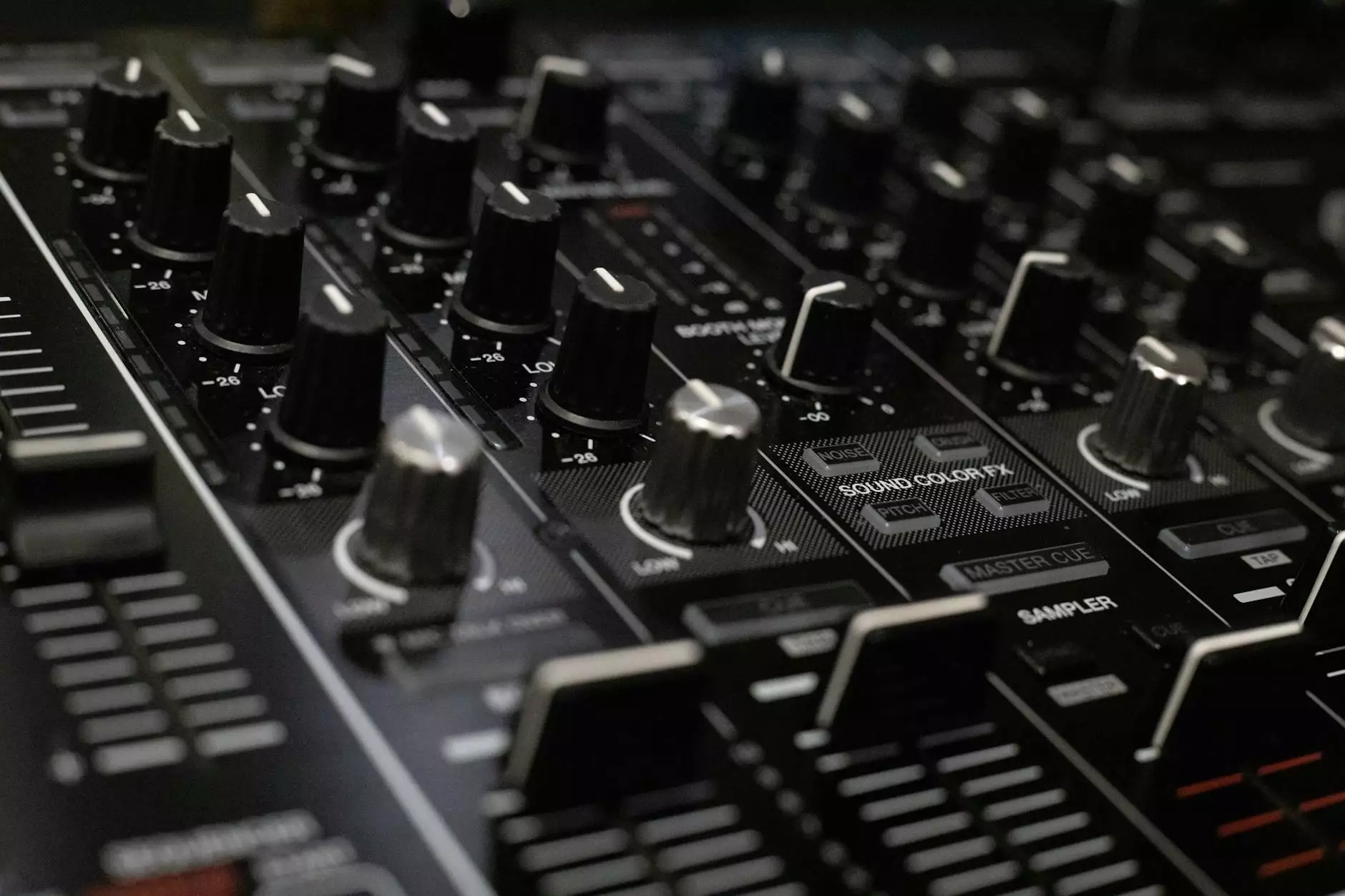Enhancing Gameplay Through Expert Sound Design: The Role of a Sound Designer in Game Audio

Understanding the Essence of Game Audio
In the realm of game development, audio is often overlooked amidst flashy graphics and compelling narratives. However, it is a critical component that contributes significantly to the overall gaming experience. Audio in games serves multiple functions, from signaling a player's actions to enhancing emotional responses through immersive soundscapes.
Within this intricate process, the sound designer emerges as a pivotal figure. Their expertise transforms mundane visual experiences into captivating auditory journeys, enriching the player's engagement and emotional investment.
The Sound Designer's Role in Game Development
A sound designer focused on game audio is responsible for creating, acquiring, manipulating, or generating sound and audio elements for video games. They perform a variety of tasks, including:
- Creating Original Sound Effects: This involves crafting unique audio samples that enhance gameplay, such as the sounds of footsteps, weapon fire, or magical spells.
- Field Recording: Often sound designers go out and capture real-world audio that can be used to create immersive environments—like the rustling of leaves, urban ambiance, or weather phenomena.
- Implementing Audio Middleware: Familiarity with tools like FMOD or Wwise allows sound designers to integrate audio effectively into the game, ensuring soundscapes respond dynamically to player interactions.
- Mixing and Mastering: After all sounds are created and recorded, sound designers mix and master them to achieve the perfect balance, ensuring clarity and impact across various in-game scenarios.
The Creative Process of a Sound Designer
The journey of a sound designer in game audio can be broken down into distinct phases:
1. Conceptualization
This initial phase involves understanding the game’s narrative, themes, and the emotional responses the developers want to evoke from players. The sound designer collaborates closely with the development team to align audio elements with the game vision.
2. Sound Creation
Here, sound designers create audio assets. Utilizing a variety of audio recording tools, synthesizers, and software, they experiment with sounds until they find the perfect auditory representation of the game's elements.
3. Integration
Using audio middleware tools, sound designers implement sounds into the game engine. This requires an understanding of how audio interacts with gameplay mechanics and player inputs, making schedules for audio triggers and ensuring the right sound plays in the right context.
4. Testing and Refining
After integration, sound designers must engage in rigorous testing. This phase involves playing through the game to ensure that audio enhances rather than detracts from the experience. Feedback is collected and adjustments are made accordingly.
Why Quality Sound Design Matters
Quality game audio can significantly affect player experience in various ways:
- Enhancing Immersion: High-quality sound effects and ambient sounds can envelop players in the game world, heightening their emotional responses and anchoring players more deeply in the story.
- Communicating Information: Sounds are crucial for gameplay cues. For instance, audio indicators can alert players to crucial events, such as enemy movements or environmental changes, guiding their actions intuitively.
- Establishing Tone and Atmosphere: The right audio can set the mood—whether it's the haunting echoes in a horror game, the joyful chimes in an adventure, or the adrenaline-pumping sounds of a battle scene.
- Brand Recognition: Iconic sound design has become synonymous with success in the gaming industry. Think of the distinctive sounds associated with franchises like Mario or Halo—these audio elements become part of players' memories and experiences.
Collaboration: The Key to Successful Audio Development
To create exceptional game audio, sound designers must collaborate effectively with:
- Game Developers: Understanding the technical constraints and creative aspirations of developers ensures that the audio aligns well with gameplay.
- Playtesters: Engaging with the gaming community during playtesting phases provides invaluable feedback that helps fine-tune audio elements for optimal player reception.
- Musicians and Composers: A harmonious relationship with composers allows sound designers to blend sound effects seamlessly into the music score, strengthening the overall auditory experience.
Emerging Trends in Game Audio Design
As technology evolves, so does the landscape of game audio. Here are some emerging trends that sound designers are embracing:
Immersive Audio Technologies
With the rise of virtual reality (VR) and augmented reality (AR), sound design is evolving to create more immersive experiences. Spatial audio allows players to perceive sound in a three-dimensional space, enhancing realism and immersion.
Adaptive Music Systems
Adaptive music systems dynamically change the music score based on player choices and in-game actions. This creates a personalized experience that can elevate storytelling in games significantly.
AI in Sound Design
Artificial Intelligence (AI) is beginning to influence sound design practices by allowing for procedural audio generation, where sounds can adapt in real-time based on the game environment and player interactions.
Getting Started as a Sound Designer in Game Audio
If you're aspiring to join this exciting field, consider the following steps to get started:
- Learn the Fundamentals: Understanding basic audio principles and theories is crucial. Online courses and tutorials can provide a strong foundation.
- Familiarize with Tools: Master audio editing software and middleware tools. Familiarity with programs like Pro Tools, Ableton, FMOD, and Wwise is essential.
- Create a Portfolio: Build a diverse portfolio showcasing your skills in sound design. Include original sound effects, field recordings, and music samples.
- Network: Engage with the gaming community. Attend industry events, join online forums, and reach out to professionals in the field.
Conclusion: The Sound Designer's Indispensable Role
In summary, the role of a sound designer in game audio is not just about adding blips and booms; it’s about crafting a multifaceted auditory experience that resonates with players. Their work ultimately enhances the game’s emotional depth, encourages player engagement, and elevates storytelling. At Pinglestudio.com, we understand the importance of impeccable sound design in gaming and strive to integrate the finest audio elements in our projects.
As the gaming industry continues to grow, so does the need for skilled sound designers who can keep pace with the innovative strides in audio technology. Investing in quality sound design will not only elevate your game's marketability but also ensure a memorable experience for players around the globe.
sound designer game audio






